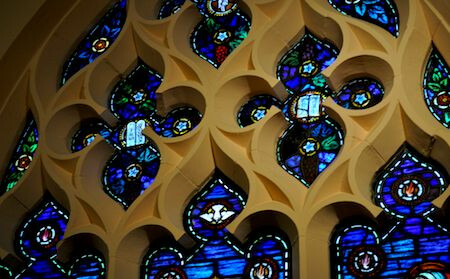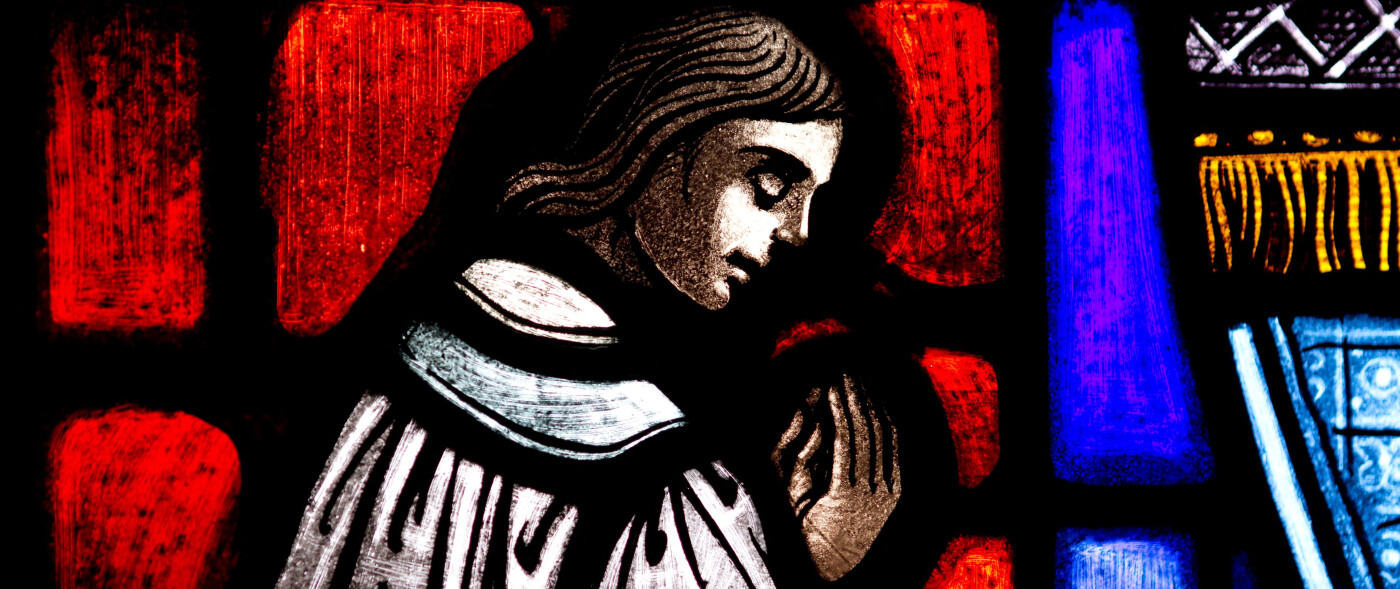Getting Ready for Sunday: By Jonathon Shea Gilliland

Jonathon Shea Gilliland
Second Sunday After Epiphany, Year A (John 1:29-42)
Behold the Lamb of God
“Behold the Lamb of God. Behold Him who takes away the sins of the world.”[1] These words of St. John the Baptist, found in our Gospel lesson for this Sunday, may seem familiar to the point of banality to many Christians. Jesus is given many titles in both our worship and our everyday speech: the Christ, the Lord, the Good Shepherd, the Lamb of God, and so on. Indeed, just in our passage from the Gospel of John, Jesus is called “Lamb of God,” “Son of God,” “Teacher,” and “Messiah.”
It would be easy, then, to miss the importance of John the Baptist’s naming of Jesus as the Lamb of God in this passage. Just a few verses before our lesson, the Evangelist has identified Jesus as the Divine Word, who was “with God” and “was God.”[2] Jesus, the Word of God, created the world, was made flesh, and has offered grace to all who would receive Him to become God’s own children. If Jesus is indeed the Word, the all-powerful Creator God of the universe, why would John the Baptist dare to associate Him with the meek, powerless, and lowly figure of a lamb?
To fully appreciate Our Lord’s identity as the Lamb of God, we should understand that, in Jesus’ historical context, the title indicated something much more than helplessness or docility. Amid the politically tumultuous backdrop of Roman oppression, a common motif of Jewish religious writers was that of a Conquering Lamb who would come to defeat all evil and set God’s people free from the beasts who ruled over God’s children.[3] Indeed, in Revelation 17, Jesus is called the Lamb who is Lord of lords and King of kings, and who defeats the wicked kings of the earth who serve God’s enemy, the Beast.
So the Lamb of God is a powerful, even terrifying title, and one that should increase our sense of holy fear and devotion to Our Lord. But the Lamb of God is also, in the Biblical imagination, a title for the Suffering Servant who gives His life for the sake of many, and who takes away the sins of the world. By twice referring to Jesus as the Lamb of God, the Baptist is perhaps hinting at Jesus’ identity as God’s elected Servant who, in Isaiah 53, is “lead to slaughter”[4] and whose suffering will “make many righteous, and he shall bear their iniquities.”[5] In this Sunday’s lesson from Isaiah 49, the Servant is a “light to the nations” who “brings salvation to the ends of the earth.”[6] John the Baptist seems to have this in mind when he says Jesus, the Lamb of God, will take away the sins of the world.
Finally, Jesus the Lamb of God—who conquers evil and who takes away our sins—invites us to a Feast. In Revelation 19, after the defeat of sin and death, the Lamb of God hosts a grand Wedding Feast with the saints, celebrating the salvation of many and the final marriage of Christ, who is our Passover, and His Bride, the Church. An angel instructs the seer to “Write this: Blessed are those who are invited to the marriage supper of the Lamb!”[7] As we prepare to meet Our Lord in the Eucharistic Feast this Sunday, let us prayerfully consider these words: “Behold the Lamb of God. Behold Him who takes away the sins of the world. Blessed are those who are invited to the marriage supper of the Lamb.”
[1] John 1:29.
[2] John 1:1.
[3] Raymond Brown, The Gospel According to John, 58-60. Brown names The Testament of the Twelve Patriarchs and The Book of Enoch as examples of the Conquering Lamb motif from non-Biblical ancient Jewish writings.
[4] Isaiah 53: 7.
[5] Isaiah 53: 11.
[6] Isiah 49: 6.
[7] Revelation 19:9.



